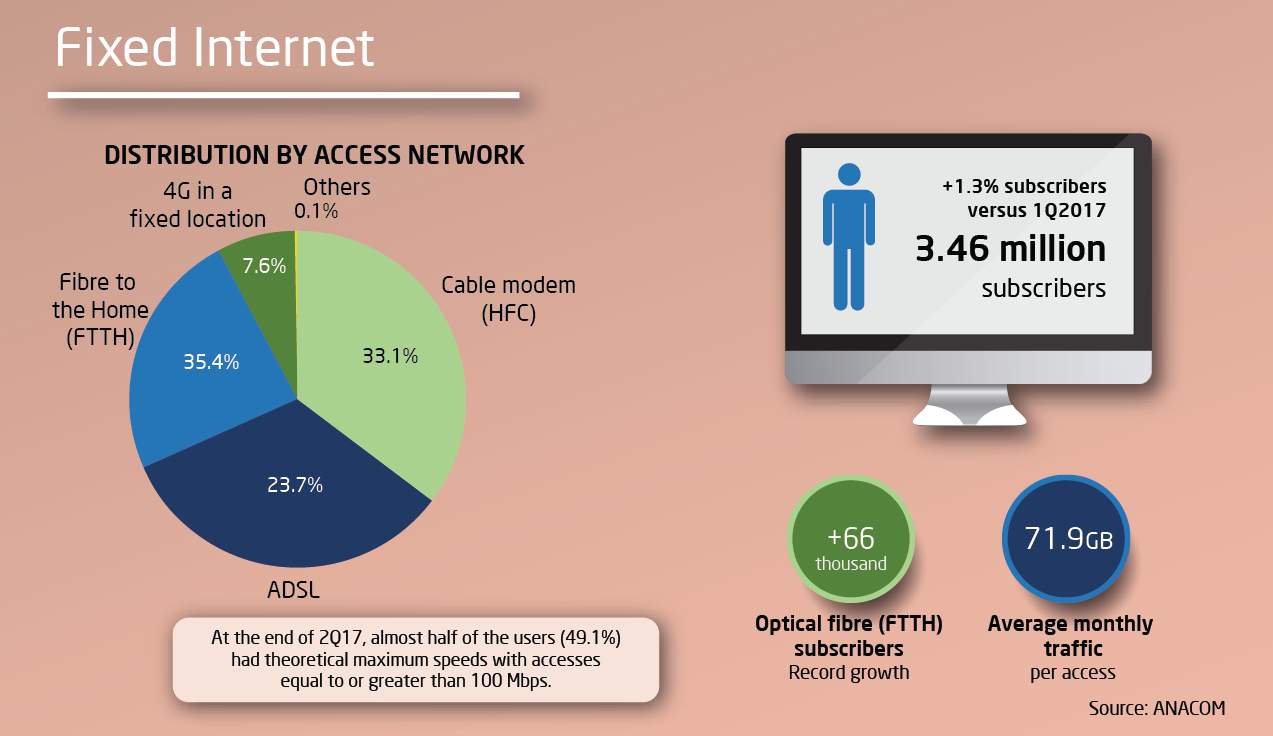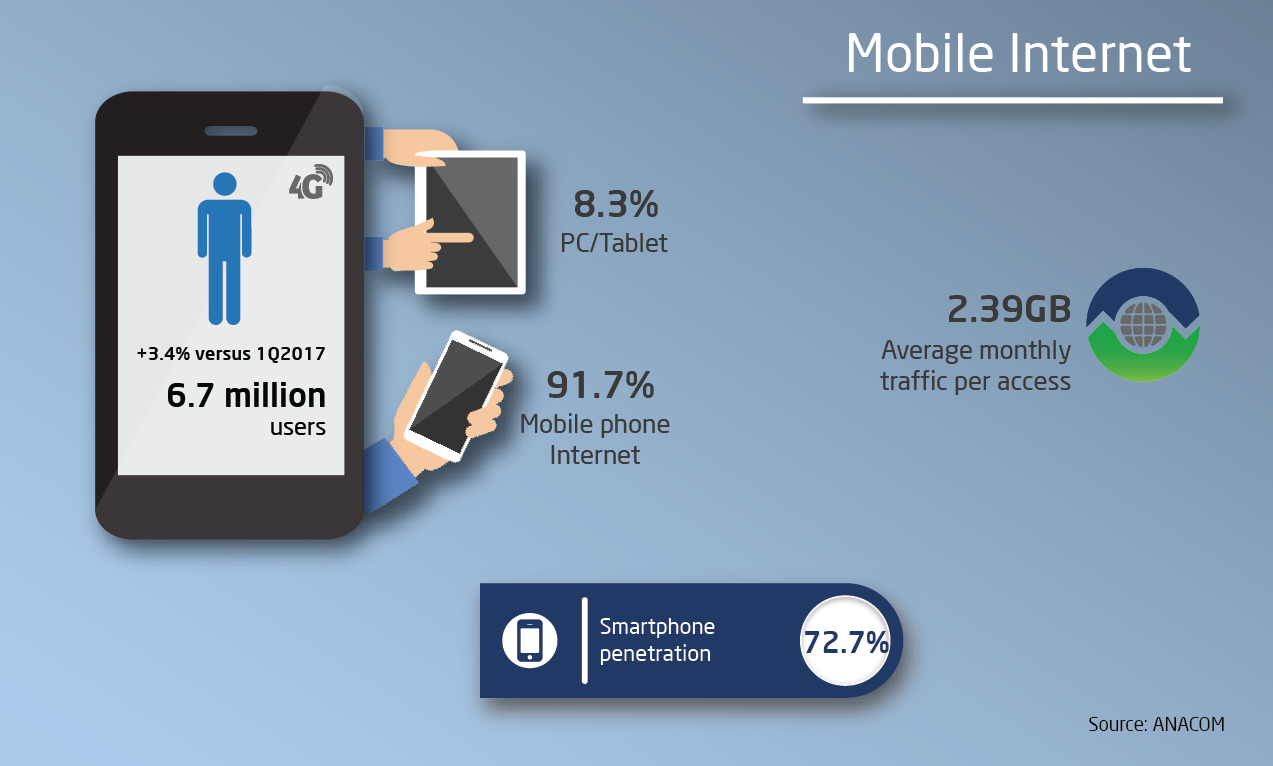At the end of June 2017, almost half of fixed broadband users in Portugal (49.1%) had access speeds equal to or greater than 100 Mbps, versus 36.5% a year earlier. The percentage of access speeds in excess of 30 Mbps rises to 70.3%. Over the last 12 months, the number of accesses with speeds equal to or greater than 100 Mbps has increased by 511 thousand.
As at the end of second quarter 2017, broadband Internet access traffic (fixed and mobile) totalled 790 million gigabytes (GB), increasing by 9.1% versus the first quarter and by 33.8% versus 2nd quarter of 2016, marking a historical maximum. This trend is mainly explained by growth in fixed broadband traffic, which represented around 94% of the total. Internet access traffic via mobile accesses increased by 17.8% over the quarter being reported.
Average monthly traffic per broadband Internet access at a fixed location was 71.9 GB. The traffic generated by mobile broadband customers with actual use was 2.39 GB per month (11.5 GB per month in the case of tablet/PCs).
At the end of the second quarter, there were around 3.46 million Internet accesses at a fixed location, 1.3% more than in the previous quarter. In year-on-year terms, there was an increase of 205 thousand accesses, which represents an increase of 6.3%. It is estimated that 98.6% of homes with the fixed broadband Internet access service acquired the service as part of a bundle of services.
Since beginning of the year, optical fibre (FTTH/B) has been the main form of fixed broadband Internet access in Portugal (35.4% of accesses). Cable accounted for 33.1% of fixed broadband internet access and ADSL 23.7%. LTE at a fixed location accounted for 7.6% of total accesses.
The biggest contribution to the growth reported in the number of accesses has come from optical fibre (FTTH/FTTB). Over the last year, the number of fibre accesses has increased by 29.6% (280 thousand accesses). Over the second quarter, fibre accesses increased by 5.7% to 1.23 million accesses.
Penetration of the Internet access service at a fixed location was 33.6 per 100 inhabitants in the case of fixed accesses and 65.2 per 100 inhabitants in the case of mobile accesses with actual use. Penetration of residential fixed broadband service was 69.9 per 100 conventional dwellings and 48.1 per 100 private households.
The number of users who actually used mobile broadband Internet increased by 3.4% over the previous quarter and by 18.4% year-on-year to 6.7 million.
MEO's share of fixed accesses was reported at 39.8% (-2.7 percentage points year-on-year), followed by Grupo NOS with a share of 37.7% (+0.7 percentage points) and Vodafone with 18% (+1.8 percentage points). Grupo Apax, which includes NOWO and ONI, had a share of 4.2% (+0.1 percentage points).
In the case of mobile broadband, MEO's share of active customers was 38.6% (-4.5 percentage points versus 2Q2016), followed by NOS with 32.1% (+1.3 percentage points) and Vodafone with 28.2% (+2.3 percentage points). NOWO, which launched commercial mobile broadband service offers in April 2016, reported a 0.9% share.
Between January and June, total revenues from the fixed Internet access service (stand-alone and bundles of services which included this service) were reported at around 895 million euros, increasing by 7.2% over the same period of 2016. Revenues from the mobile Internet access service were reported at 177.8 million euros, an increase of 6.6% over the same period of 2016.
Infographic about Internet access service - fixed Internet

Infographic about Internet access service - mobile Internet

Consult the statistical report:
- Internet access service - 2nd quarter 2017 https://www.anacom.pt/render.jsp?contentId=1417331




